

|
| ČESKÁ REPUBLIKA | CZECH REPUBLIC |
| Olomoucký kraj | Olomouc region |
| Okres: Šumperk |
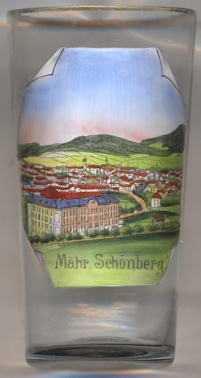
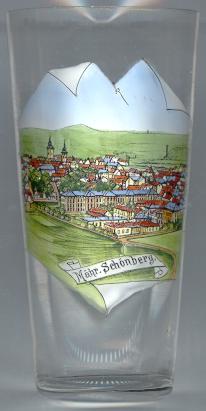
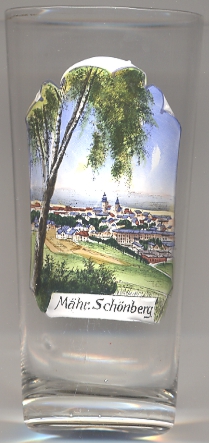 The district town Šumperk was already mentioned as a town in 1281 as
pulcher mons (which became the German name Schönberg, which means beautiful mountain).
The town obtained a mining privilege in 1340 and gained importance as it was
situated at a trading route from Moravia to Silesia. From the 15th and 16th
centuries onward the cloth-making industry prospered. The guild of the linen weavers was
founded in 1442, the guild of the cloth makers in 1481. The town redeemed itself
from serfdom in 1562. After the Thirty Years' War (1618–1648), Šumperk became a protected town
of the Princes of Liechtenstein. The 17th century was a dark period for the Šumperk.
A large fire destroyed the town in 1669 and towards the end of the century
a large number of witch trials took place here. The modern industrial development
of the town was initiated by the opening of the railway line from Olomouc
via Šumperk to Prague in 1845.
The district town Šumperk was already mentioned as a town in 1281 as
pulcher mons (which became the German name Schönberg, which means beautiful mountain).
The town obtained a mining privilege in 1340 and gained importance as it was
situated at a trading route from Moravia to Silesia. From the 15th and 16th
centuries onward the cloth-making industry prospered. The guild of the linen weavers was
founded in 1442, the guild of the cloth makers in 1481. The town redeemed itself
from serfdom in 1562. After the Thirty Years' War (1618–1648), Šumperk became a protected town
of the Princes of Liechtenstein. The 17th century was a dark period for the Šumperk.
A large fire destroyed the town in 1669 and towards the end of the century
a large number of witch trials took place here. The modern industrial development
of the town was initiated by the opening of the railway line from Olomouc
via Šumperk to Prague in 1845.
Born in Šumperk were:
The tenor Leo Slezak (1873–1946), singer at the Hofoper (now State Opera) in Vienna.
Roman Karl Scholz (1912–1944), Augustinian Canon, writer.
He was executed by the Nazis for his participation in the resistance movement
in Austria.
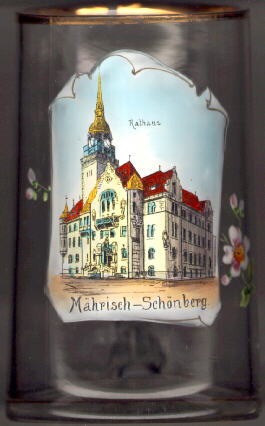
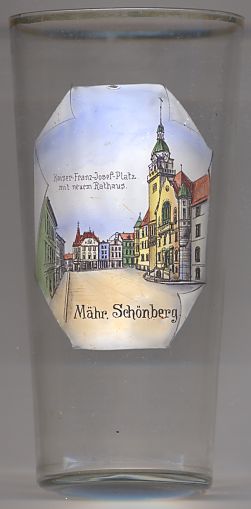
The  Town Hall [left, no. 027, and right, no. 2198]
of Šumperk was built in 1909–1911 in Saxon Neo-Renaissance style with Art Nouveau elements
and replaced the old Gothic and Renaissance town hall of the 15th century.
Town Hall [left, no. 027, and right, no. 2198]
of Šumperk was built in 1909–1911 in Saxon Neo-Renaissance style with Art Nouveau elements
and replaced the old Gothic and Renaissance town hall of the 15th century.
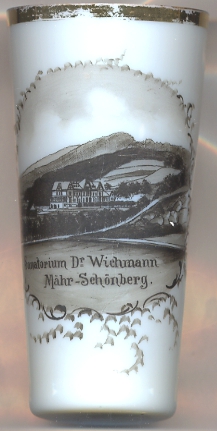
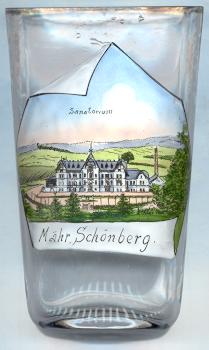
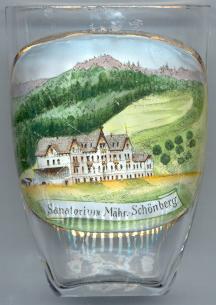
The  'sanatorium', built 1898–1899,
was used for the tratment of diseases of the lung
and later became a part of the municipal hospital of Šumperk.
On glass no. 2859 [far left] it is labeled Sanatorium Dr. Wichmann.
'sanatorium', built 1898–1899,
was used for the tratment of diseases of the lung
and later became a part of the municipal hospital of Šumperk.
On glass no. 2859 [far left] it is labeled Sanatorium Dr. Wichmann.
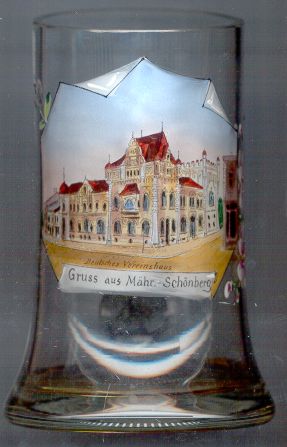
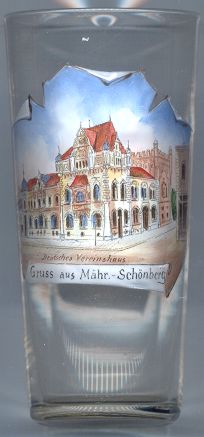
The  Deutsches Vereinshaus (German Club House) [left, no. 1473, and right, no. 2071]
was built in 1902 by the Viennese architect Georg Berger.
Deutsches Vereinshaus (German Club House) [left, no. 1473, and right, no. 2071]
was built in 1902 by the Viennese architect Georg Berger.
![[scale]](lineal.jpg)